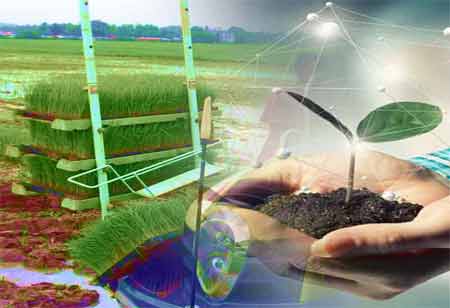Thank you for Subscribing to Food Business Review Weekly Brief
Revolutionizing the Food Industry with Smart Packaging Technologies
For food goods, smart packaging—that is, packaging that has sensors, tags, and other smart tools—is becoming increasingly crucial.

By
Food Business Review | Tuesday, April 02, 2024
Stay ahead of the industry with exclusive feature stories on the top companies, expert insights and the latest news delivered straight to your inbox. Subscribe today.

Smart packaging technologies are revolutionizing the food industry by providing consumers with more efficient, cost-effective, and eco-friendly packaging solutions. This article discusses the different types of smart packaging technologies that transform the food sector.
Fremont, CA: For food goods, smart packaging—that is, packaging that has sensors, tags, and other smart tools—is becoming increasingly crucial. Active and intelligent packaging and other cutting-edge technology are useful tools that help increase shelf life, decrease food spoiling, and improve supply chain visibility.
Significance of Smart Packaging for Food Supply Chain
Generally speaking, food packaging has four basic objectives: to market the food producer or brand, to convey information about nutrition, ingredients, and usage, to protect and preserve food quality, and to provide convenience in use and disposal.
But as smartphone use grows and consumer demand for high-quality, sustainable, and safe food increases, businesses will need to come up with creative packaging solutions to keep up with the times.
New smart packaging technologies were developed to guarantee regulatory compliance, boost food traceability, decrease food waste, provide a transparent food supply chain, and enhance consumer interaction with brands. Above all, though, food packaging that is proactive and smart injects new life into a largely stagnant industry.
Smart Packaging Technology for the Food Sector
Many smart packaging tools are now in use in food packaging. An overview of each is given below, but keep in mind that as this subject grows, there will be a lot of overlap, and new tools will also be released.
Active and Passive Packaging
Most individuals can identify passive and active packaging when they see it. Consider anything that regulates the food's atmosphere. While passive packaging preserves a product's conditions during distribution, sale, and storage, active packaging comprises equipment that actively works on a food product.
Intelligent Food Packaging
Food goods can be made more functional using intelligent packaging. Sensors, time-temperature indicators, and tags can offer real-time location and product data as a product travels through a supply chain. These tools can be detected by intelligent packaging systems, which can then give a more realistic picture of the state of packed food and its lifetime.
Intelligent packaging is a superior approach to reduce operations administration and safeguard the quality of food products since it keeps an eye on delicate systems like cold chain logistics. Additionally, the packaging sector is starting to use intelligent technologies to build "digital twins" for their companies. These can provide general optimizations when combined with data analytics tools.
NFC, QR Codes, and Smart Labels:
Product labels are another area where smart packaging ideas are applied, offering information beyond text and images. Bar codes are outdated because of technologies like near-field communication (NFC) and QR codes, which offer wireless, connected, and accessible packaging. Users can access information from these devices via a smartphone, improving customer interaction and product tracking. These tools also provide the option of remote payment, which provides a pay-as-you-pick substitute for the cash register paradigm.
Because NFC tags are fast to verify and hard to fake, they are better suited for security and authentication applications. Professionals in the supply chain may also verify pertinent information with them more effectively because they don't require the precise line of sight as QR codes do. The most effective way to engage customers is with QR codes, which provide a direct online link and virtually limitless area for games, surveys, digital marketing, and nutritional data. They also enable food packaging to function beyond its physical confines.






